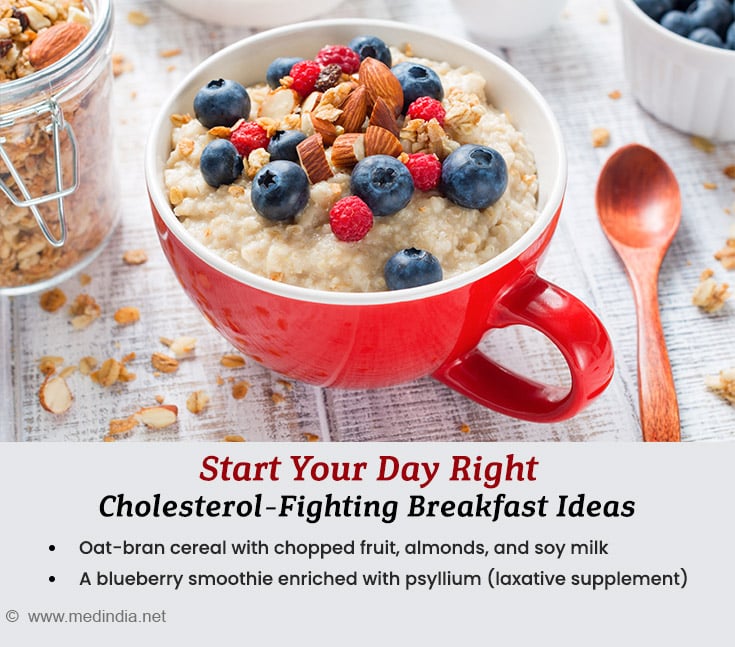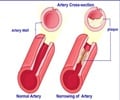- Development of a Portfolio Diet Score and Its Concurrent and Predictive Validity Assessed by a Food Frequency Questionnaire - (https://europepmc.org/article/MED/34445009)
- Soy and Health Update: Evaluation of the Clinical and Epidemiologic Literature - (https://pubmed.ncbi.nlm.nih.gov/27886135/)
- Fiber supplements and clinically proven health benefits: How to recognize and recommend an effective fiber therapy - (https://pubmed.ncbi.nlm.nih.gov/28252255/)
- The Bioavailability and Biological Activities of Phytosterols as Modulators of Cholesterol Metabolism - (https://pubmed.ncbi.nlm.nih.gov/35056839/)
- Consumption of plant seeds and cardiovascular health: epidemiological and clinical trial evidence - (https://pubmed.ncbi.nlm.nih.gov/23897849/)
About
When most people hear the word "diet," they associate it with weight loss. But not all meal plans are aimed at shedding pounds. The Portfolio Diet is one such approach - created specifically to help lower cholesterol levels rather than slim waistlines. It is a thoughtfully designed nutritional strategy that focuses on the combination of cholesterol-lowering foods, rather than relying on just one “superfood"(1✔ ✔Trusted Source
Development of a Portfolio Diet Score and Its Concurrent and Predictive Validity Assessed by a Food Frequency Questionnaire
Go to source).
The Portfolio Diet originated as a response to traditional approaches that focused on single nutrients or food items. Its concept borrows from the investment world - just as an investor would diversify assets to reduce risk, this diet combines multiple food components that are proven to support heart health. The goal is to bring together several modestly effective foods into one consistent, daily dietary routine to yield meaningful reductions in
Did You Know?
Viscous fiber turns into a gel in your gut and "traps" cholesterol before your body can absorb it. #portfoliodiet #lowercholesterol #medindia

Four Pillars of the Portfolio Diet
At its core, the Portfolio Diet revolves around four key categories of food that work together to reduce cholesterol levels:
Soy-Based Foods
Soy is known for its cholesterol-lowering effects and serves as a protein-rich substitute for animal products(2✔ ✔Trusted Source
Soy and Health Update: Evaluation of the Clinical and Epidemiologic Literature
Go to source). The diet encourages the use of soy milk, tofu, tempeh, and soy-based meat alternatives like soy burgers, or soy cold cuts. These options not only help reduce saturated fat intake but also provide isoflavones, which may have additional heart benefits.
Viscous Fiber-Rich Foods
Viscous fiber, a type of soluble fiber, turns gel-like in the gut and traps cholesterol, preventing its absorption(3✔ ✔Trusted Source
Fiber supplements and clinically proven health benefits: How to recognize and recommend an effective fiber therapy
Go to source). This type of fiber is found in oats, barley, eggplant, okra, citrus fruits, and berries. Psyllium husk, often taken as a fiber supplement, is another good source. Incorporating these foods regularly helps block the entry of cholesterol into the bloodstream.
Plant Sterol-Enriched Products
Plant sterols are naturally occurring compounds that resemble cholesterol and compete with it for absorption in the digestive system(4✔ ✔Trusted Source
The Bioavailability and Biological Activities of Phytosterols as Modulators of Cholesterol Metabolism
Go to source). Certain margarines and dietary supplements are fortified with these compounds, which help reduce cholesterol absorption when consumed daily.
Nuts and Seeds
Tree nuts, particularly almonds, along with peanuts and seeds, are key to the Portfolio Diet. They provide healthy fats and fiber, both of which support cholesterol control(5✔ ✔Trusted Source
Consumption of plant seeds and cardiovascular health: epidemiological and clinical trial evidence
Go to source). A small handful a day is all it takes to benefit from their effects.
Sample Diet Plan of the Portfolio Diet
The foods in this diet aren't meant to be crammed into one meal but are distributed throughout the day. Here's what a typical day might look like:
- Breakfast: A bowl of oat-bran cereal with chopped fruit, almonds, and soy milk, along with a blueberry smoothie enriched with psyllium fiber.
- Lunch: A comforting bowl of bean soup, oat-bran bread, and a fresh apple.
- Dinner: A stir-fry made with tofu, vegetables like okra and eggplant, and a sprinkling of peanuts.
- Snacks: Healthy options like soy yogurt, crunchy chickpeas, sterol-enriched margarine on oat-bran toast, or simply a few nuts.
Does Portfolio Diet Really Work?
To test its real-world impact, researchers invited participants interested in lowering their cholesterol to try the Portfolio Diet. Without providing pre-cooked meals, they offered guidance and meal plans. Results showed that about one-third of participants achieved a significant reduction in LDL cholesterol - more than 20% - within just six months. These effects were noticeable as early as two weeks into the diet and remained stable throughout.
Another 31% experienced a 15% decrease in LDL, while some saw minimal or no change- largely due to inconsistent adherence to the diet. Participants found it easier to stick with nuts and plant sterol products than to completely substitute meat and dairy with soy-based alternatives. Those who cooked at home regularly fared better than those who relied on packaged foods or frequently ate out.
The Portfolio Diet emphasizes a practical and sustainable shift in eating patterns. It's not about strict rules or rapid transformations, but rather a flexible and balanced integration of cholesterol-lowering foods into everyday meals. While not everyone may see dramatic results, consistent effort and mindful food choices can support heart health over time.









